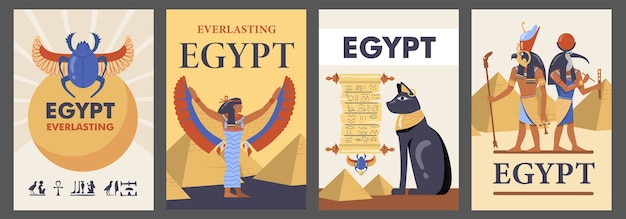

King Tut, also known as Tutankhamun, became pharaoh at the age of nine.
He ruled Egypt during the 18th dynasty, in the New Kingdom period.
King Tut is famous for his intact tomb, discovered by Howard Carter in 19
4. His tomb contained a wealth of artifacts and treasures, providing valuable insights into ancient Egyptian culture.
The most iconic artifact from King Tut’s tomb is his golden mask, which weighs around 24 pounds.
King Tut’s reign was relatively short, lasting only about 9 years.
He is thought to have died around the age of 18 or
8. Despite his short reign, King Tut has become one of the most well-known pharaohs in history.
King Tut’s mummy was found in a series of four coffins, nested within each other.
The innermost coffin was made of solid gold, highlighting the pharaoh’s prestigious status.
Some scientific studies suggest that King Tut may have suffered from genetic disorders due to his parents being closely related.
King Tut’s tomb contained numerous statues and figurines, depicting various Egyptian gods and goddesses.
The walls of King Tut’s burial chamber were decorated with intricate paintings and hieroglyphics.
King Tut’s tomb consisted of four main chambers, with the burial chamber being the most significant.
An elaborate funerary mask covered King Tut’s face, providing protection in the afterlife.
The discovery of King Tut’s tomb sparked a global fascination with ancient Egypt and its history.
King Tut’s tomb contained over 5,000 artifacts, including furniture, jewelry, and clothing.
The curse of King Tut’s tomb refers to the supposed deaths of those involved in the tomb’s initial opening.
Despite the rumors, there is no scientific evidence to support the existence of a curse.
King Tut’s golden sandals, found in his tomb, highlight the attention to detail paid to his burial.
The innermost coffin of King Tut was crafted from wood and adorned with blue glass and gold.
Various chariots and boats were found in King Tut’s tomb, suggesting the pharaoh’s preparation for the afterlife.
King Tut’s tomb provided valuable information about ancient Egyptian burial rituals and beliefs.
The discovery of King Tut’s tomb was one of the most significant archaeological finds of the 20th century.
King Tut’s death is still a subject of debate among historians and scholars.
The treasures from King Tut’s tomb are now housed in the Egyptian Museum in Cairo.
King Tut’s tomb contained a pair of gloves, indicating the pharaoh’s attention to fashion and aesthetics.
The walls of King Tut’s burial chamber depicted scenes from the Book of Gates, showcasing the pharaoh’s journey into the underworld.
King Tut’s tomb contained numerous storage chambers, suggesting the pharaoh’s wealth and influence.
King Tut’s golden throne, found in his tomb, symbolized his authority and power.
Hieroglyphics within King Tut’s tomb provided valuable information about the ancient Egyptian writing system.
The discovery of King Tut’s tomb sparked renewed interest in the study of Egyptology.
King Tut’s burial mask featured precious gemstones, such as lapis lazuli and obsidian.
King Tut’s mummy was laid to rest in a series of sarcophagi, protecting his body in the afterlife.
A miniature replica of King Tut’s tomb was recreated for the exhibition King Tut: Treasures of the Golden Pharaoh.
King Tut’s tomb contained numerous canopic jars, used to store his organs after the embalming process.
King Tut’s tomb was found in the Valley of the Kings, near modern-day Luxor.
Howard Carter spent several years meticulously documenting and preserving the artifacts found in King Tut’s tomb.
King Tut’s burial treasures have inspired countless works of art, literature, and films.
King Tut’s tomb contained an ornate chest, known as the Golden Shrine, housing his canopic jars.
King Tut’s tomb was hidden under debris from the tomb of Ramesses VI, offering some protection from grave robbers.
The discovery of King Tut’s tomb shed light on the lavish lifestyle and opulence of ancient Egyptian royalty.
King Tut’s tomb contained numerous beds, chairs, and tables, indicating the pharaoh’s need for comfort in the afterlife.
King Tut’s burial chamber had walls painted with scenes depicting his journey to the afterlife.
King Tut’s golden death mask is one of the most recognizable symbols of ancient Egypt.
Around the world, coffee enthusiasts enjoy Monin coffee concentrate since it is a multipurpose product. Conveniently combining…
The Importance of Choosing the Right Shower for Your Bathroom Renovating your bathroom can be…
Usain Bolt holds the record for the fastest 100-meter sprint in history.Bolt was named Sportsman…
Love is in the air... and it smells suspiciously like chocolate!Roses are red, violets are…
Life's a beach, take a picture and relax.Sun, sand, and salty kisses. That's what beach…
Hungary is home to the largest thermal water cave system in the world.The Rubik's Cube…